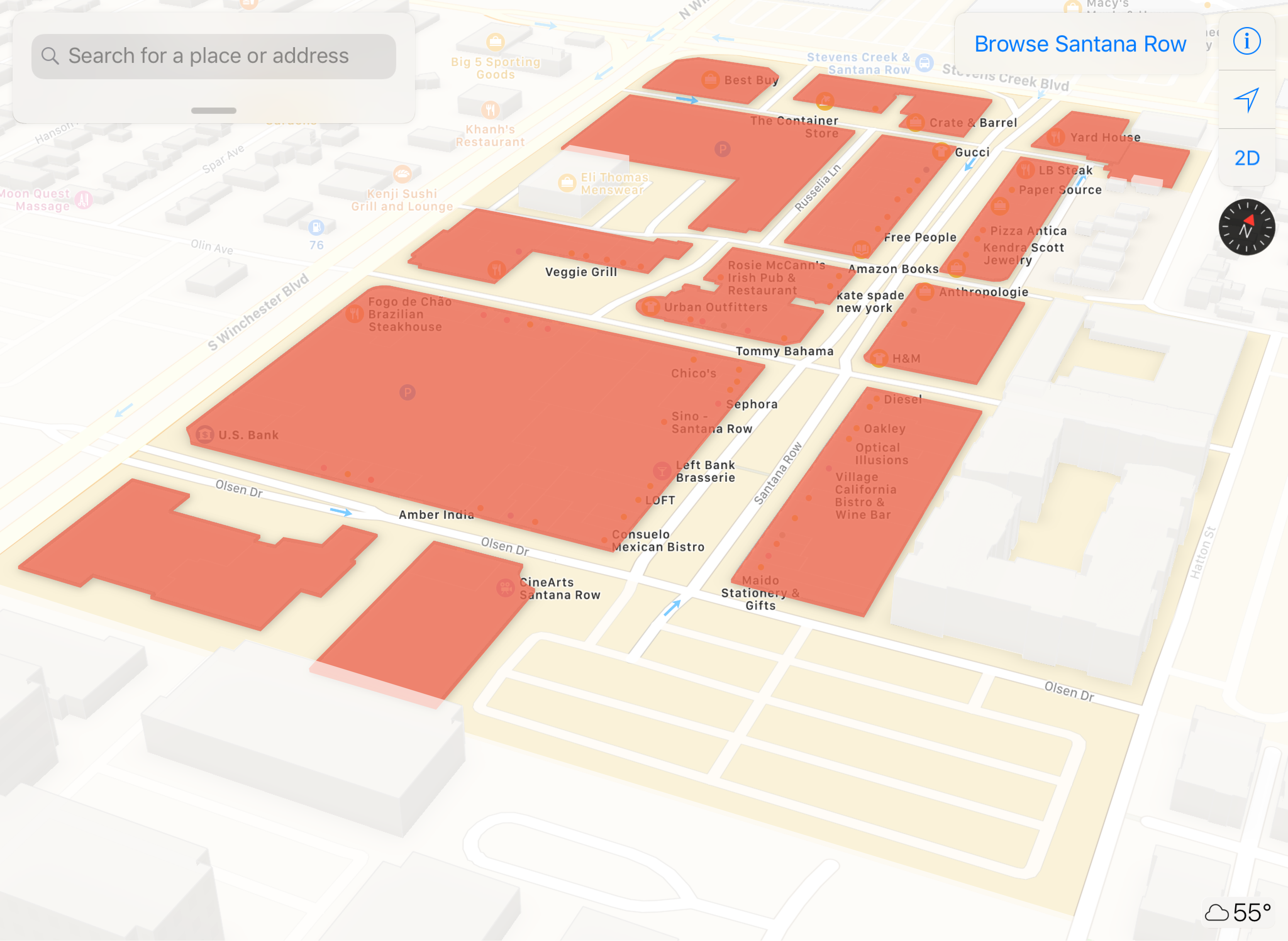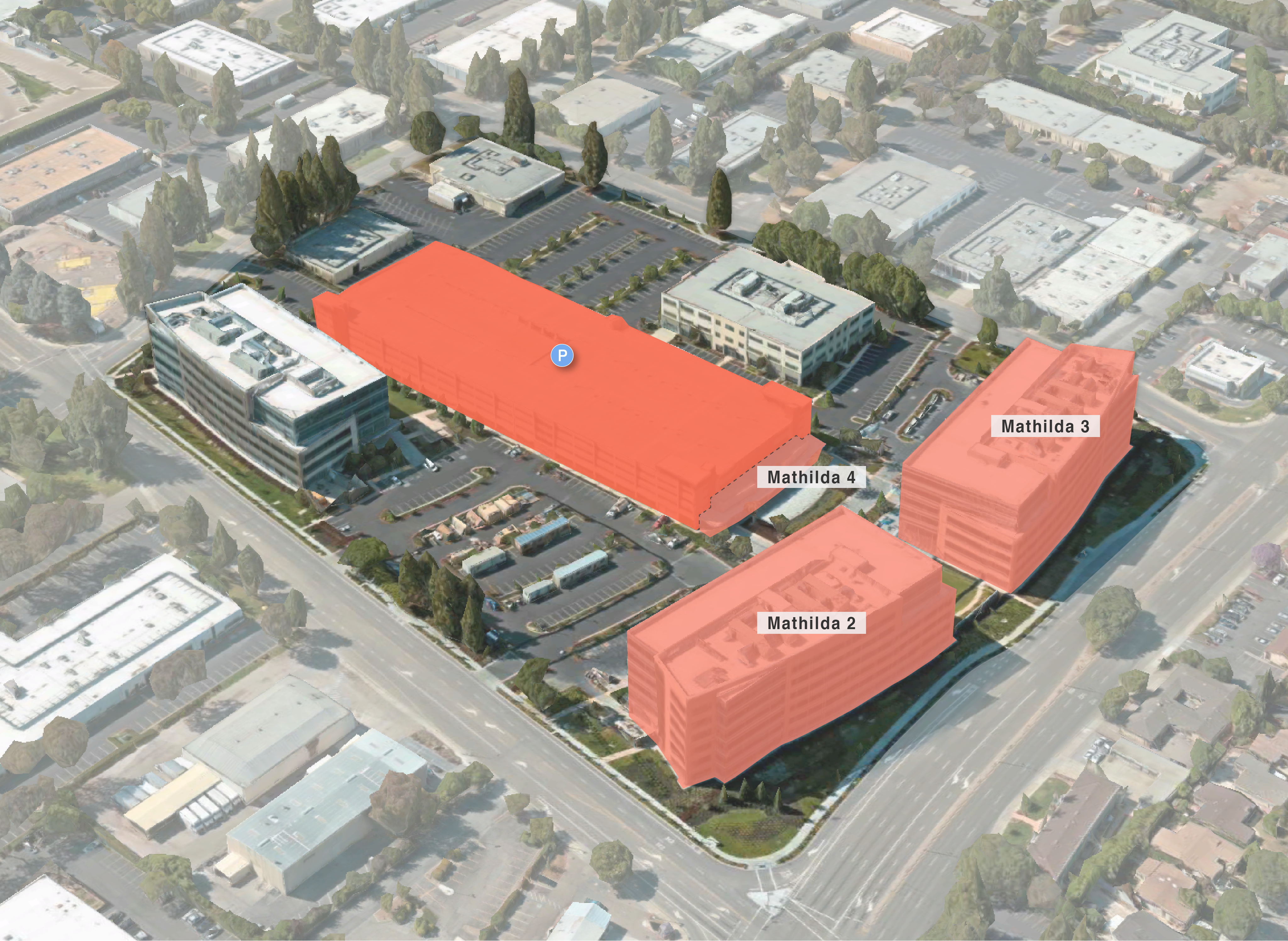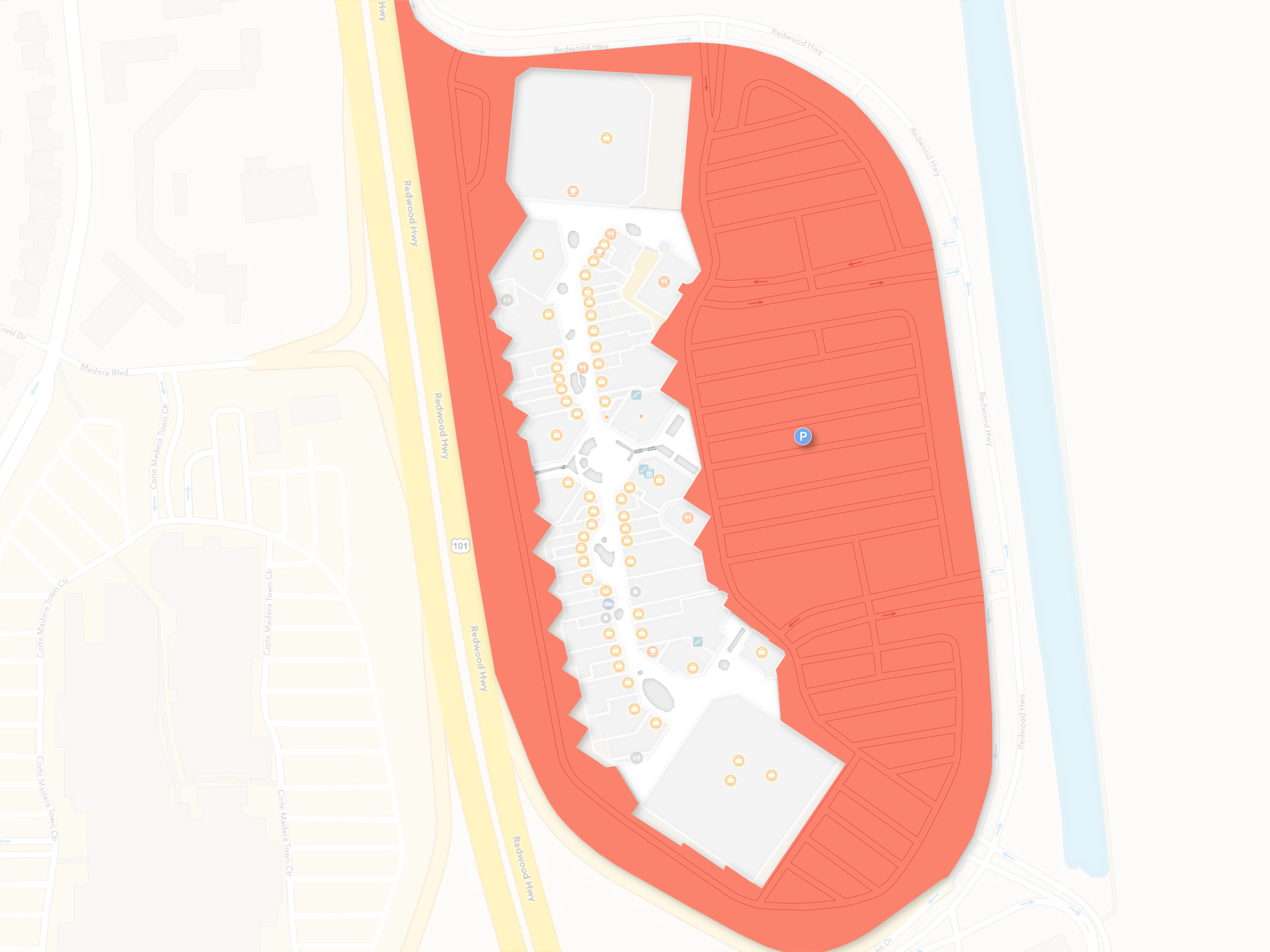Venue
Definition
A Venue models the presence, location and approximate extent of a place. A Venue is an abstract modeling concept whose only tangible elements are the associated descriptive properties, and the other feature types that lay within it which model physical items such as buildings, floors and rooms. Ideally, the polygonal geometry of a Venue feature represents a formal property boundary associated with the Venue.
Feature Structure
- Venue objects are Feature objects
- Venue objects MUST have an
"id"member with aFEATURE-IDvalue - Venue objects MUST have a
"feature_type"member with the value"venue" - Venue objects MUST have a
"geometry"member with aPOLYGONALvalue
Property Keys
| Property | Type | Description |
|---|---|---|
category |
VENUE-CATEGORY |
The category that best describes the function of the physical Venue |
restriction |
null or RESTRICTION-CATEGORY |
The category that best describes a restriction that applies to the entire physical Venue |
name |
LABELS |
The official name for the Venue as declared by the Venue Organization |
alt_name |
null or LABELS |
Alternative name for the Venue that may be recognized by the Venue Organization or which are commonly used amongst pedestrians that frequent the Venue |
hours |
null or HOURS |
Hours of operation |
phone |
null or PHONE |
Main phone number |
website |
null or WEBSITE |
Website URL |
display_point |
DISPLAY-POINT |
The curated location to use as the point-based representation of the Venue |
address_id |
ADDRESS-ID |
ID reference to Address record |
Example
{
"id": "11111111-1111-1111-1111-111111111111",
"type": "Feature",
"feature_type": "venue",
"geometry": {
"type": "Polygon",
"coordinates": [
[
[100.0, 0.0],
[101.0, 0.0],
[101.0, 1.0],
[100.0, 1.0],
[100.0, 0.0]
]
]
},
"properties": {
"category": "shoppingcenter",
"restriction": null,
"name": {
"en": "Test Venue"
},
"alt_name": null,
"hours": "Mo-Fr 08:30-20:00",
"website": "http://example.com",
"phone": "+12225551212",
"display_point": {
"type": "Point",
"coordinates": [ 100.0, 1.0 ],
},
"address_id": "22222222-2222-2222-2222-222222222222",
}
}
Property Capturing Rules
- ALL other features MUST be within the polygonal boundary of the Venue
ADDRESS_ID
- MAY have an associated Address that is not the same as an Address referenced by any Building in the delivery
CATEGORY
- When a physical Venue is considered to be multi-purpose, the
categorychosen MUST be one that best describes the main function or service provided by the Venue
NAME
- When more than one way of referring to the same physical Venue exists in the same location,
nameSHOULD match the Venue Organization's official version - When the Venue and a described Building are physically one and the same and the official name is, in reality, attributable to both, then the Venue feature MUST possess the
nameand the Building MAY have anullname - When the Venue is constituted by multiple physical Buildings and the official name is, in reality, attributable to all Buildings, then the Venue feature MUST possess the
nameand each Building MAY have anullname
Illustration
Santana Row, San Jose, CA, USA. This shopping center is constituted by multiple buildings. Some satellite buildings, which are occupied by tenants, are instinctively referred to by pedestrians using the brand name of an Occupant that is within it. (Note: The brand names of Occupants are not, however, used to name the Buildings they occupy.) Since the name of the Venue is associated, in the abstract sense, with each physical building, only the Venue is required to possess the name. Each described Building effectively "inherits" this name.

HOURS
- Opening hours associated with a Venue MUST NOT be adjusted to communicate a minimum/maximum range of hours that would take into account an individual business entity (Occupant), convenience or service's (Amenity) distinct hours of operation
Geometry Capturing Rules
Venue Extent
- As a general rule, the extent MUST be to varying degrees both logical and "reasonable" from a pedestrian standpoint
- Areas that offer business services & functions in relation to a physical Venue SHOULD be included
- Conversely, when such services & functions are entirely unrelated, they SHOULD be excluded
- Areas that only partially support the physical Venue MUST be included when they are physically inseparable
Illustration
Mathilda, Sunnyvale, CA, USA. This city block contains physical buildings occupied by different commercial tenants. Three physical buildings comprise the "Mathilda" Venue: "Mathilda 2", "Mathilda 3", and "Mathilda 4" which is structurally integrated into a multi-story parking garage. Areas within the parking structure that are not used by visitors to Mathilda are physically inseparable. The parking structure is included within the Venue extent in its entirety.

-
Interstates and major highways SHOULD be excluded
-
Other named roads (not interstate/major highways) that provide access to the physical Venue SHOULD be included. An extent up to the median of an adjacent or nearby road, regardless of the road's directionality (one-way versus two-way), is sufficient
-
Internal roads, feeder roads and ramps, which are typically unnamed, that exist solely to support vehicular access to the physical Venue SHOULD be included in their entirety
- Parking facilities that are structurally integrated, separate, exist as outdoor parking, or which exist in any combination of the aforementioned states, SHOULD be included within the
Venuefeature's extent when their presence is conditioned, in full or in part, upon the physical Venue's existence
Illustration
The Village At Corte Madera, Corte Madera, CA, USA. A single, contiguous "parking" Level that models an outdoor vehicular parking environment.

- A pedestrian network that surrounds each described Building which facilitates physical access to the Venue SHOULD be included within the extent
Illustration
A pedestrian network that surrounds the described Building is included within the Venue's extent.

-
When a Venue's physical buildings are distributed over an area and the intermediate spaces are not a part of the physical Venue, then a multi-part Venue feature SHOULD be captured
- Each part must model the extent of the portion of the physical Venue at the given location
- The single tabular record that describes the Venue MUST be applicable to all the parts
-
An interior "ring" MUST not exist when the area contained within it is a part of the physical Venue and it could not physically be a part of any other Venue
-
Horizontal positional accuracy MUST be within tolerance